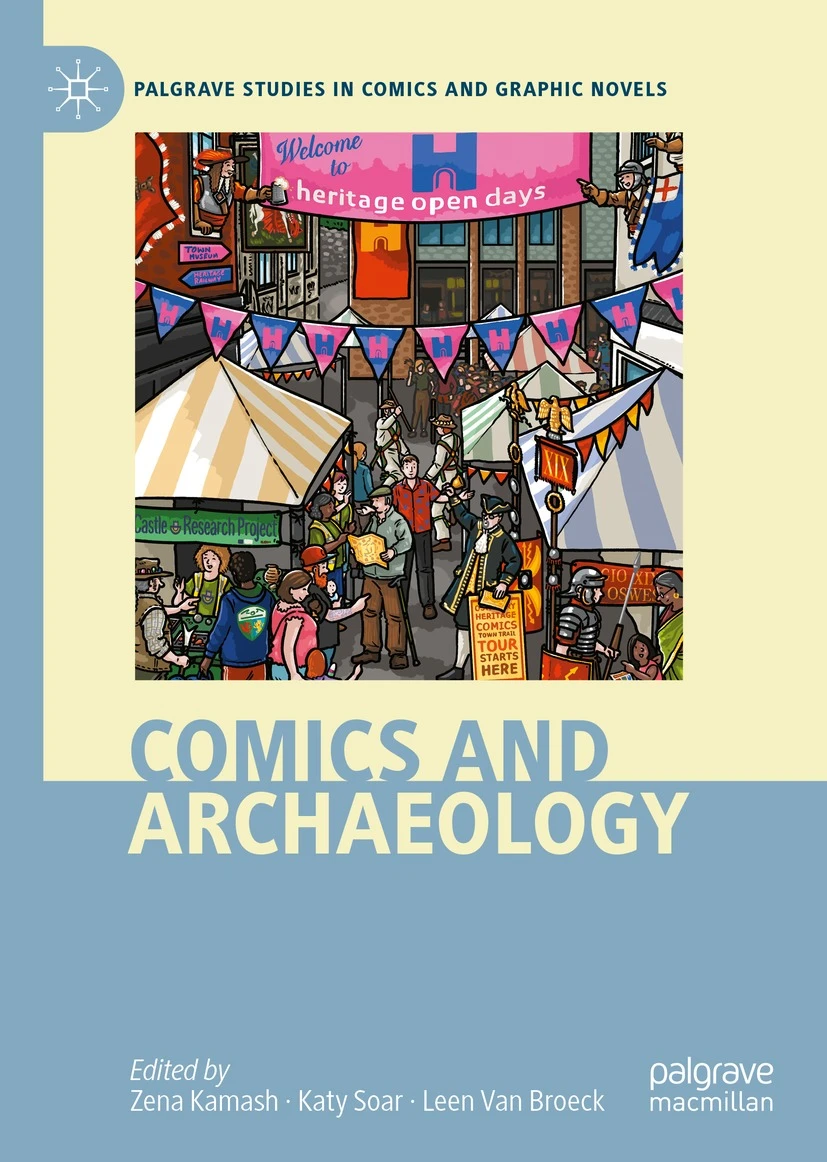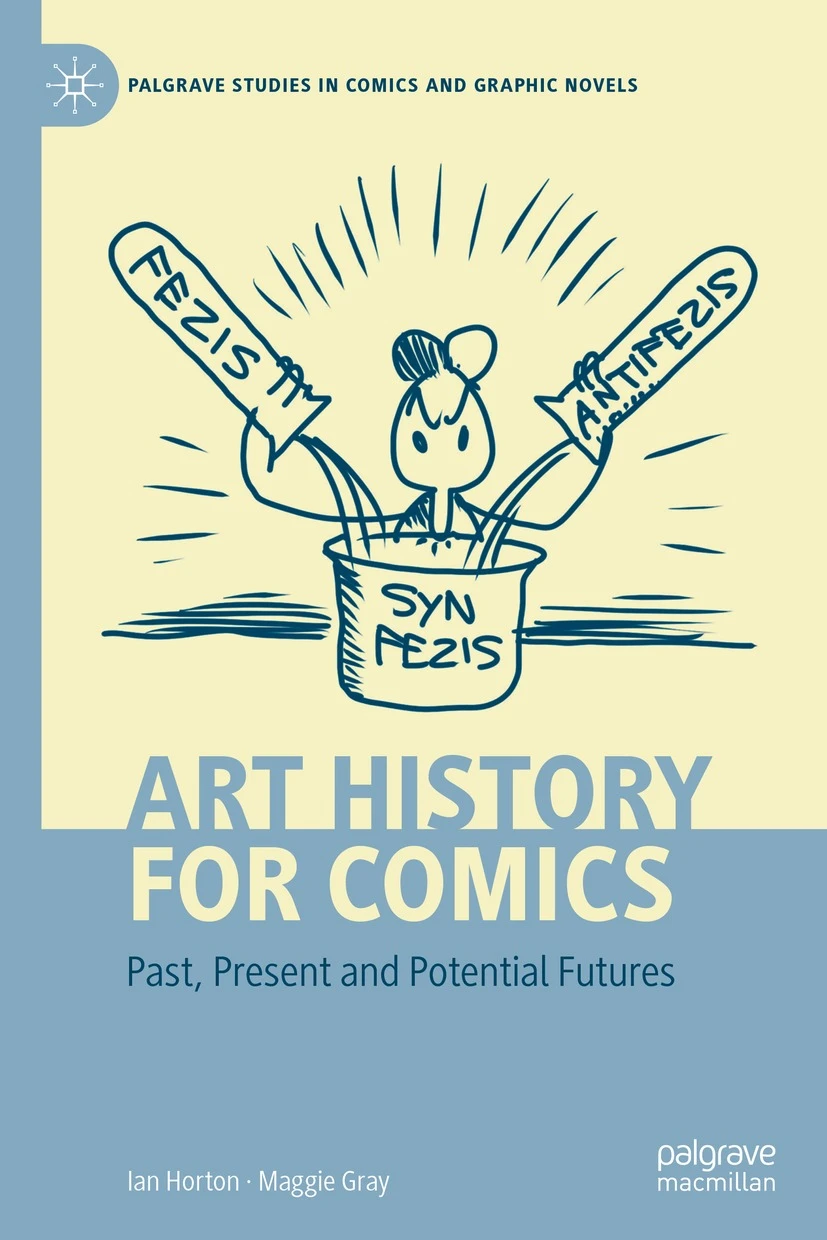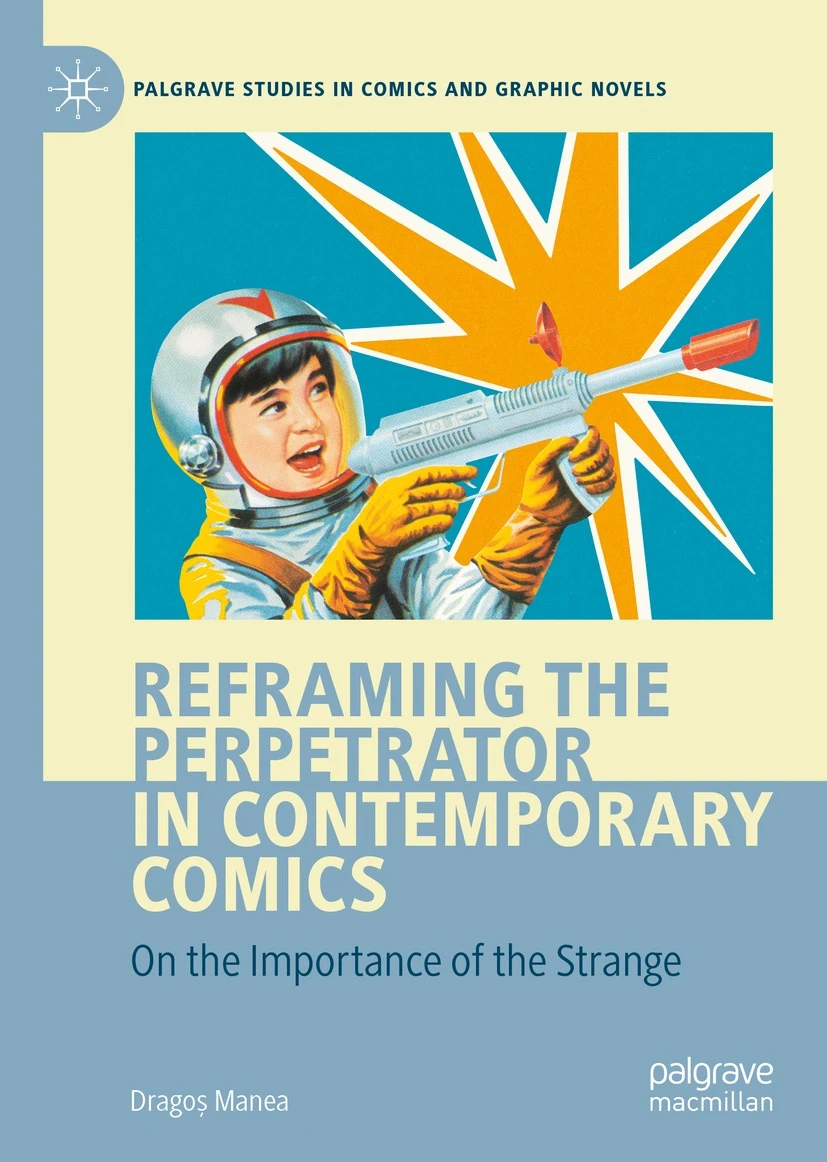Magazine
CFP: The Visual Politics of Borders, Migration and Human Rights in Comics and Graphic Narratives
CF: The Image on the Page: A Study Day Around Illustrated Print Culture
CFP: Graphic Horizons: The Future of Comics and Creativity in an Intermedial World”
Monitor 71: New Publications on Comic Books
Monitor is an irregularly published overview of publications from the previous six months that may be of relevance to comics studies scholars. The introductory texts are the respective publishers’. Do you have suggestions or information on new releases that have been overlooked and should be introduced on our website? Please let us know via email: redaktion@comicgesellschaft.de.
→ See previous Monitor posts.
 The LGBTQ+ Comics Studies Reader: Critical Openings, Future Directions
The LGBTQ+ Comics Studies Reader: Critical Openings, Future Directions
Alison Halsall, Jonathan Warren (Eds.)
University Press of Mississippi
October 2022
publisher’s website
“The LGBTQ+ Comics Studies Reader explores the exemplary trove of LGBTQ+ comics that coalesced in the underground and alternative comix scenes of the mid-1960s and in the decades after. Through insightful essays and interviews with leading comics figures, volume contributors illuminate the critical opportunities, current interactions, and future directions of these comics.
This heavily illustrated volume engages with the work of preeminent artists across the globe, such as Howard Cruse, Edie Fake, Justin Hall, Jennifer Camper, and Alison Bechdel, whose iconic artwork is reproduced within the volume. Further, it addresses and questions the possibilities of LGBTQ+ comics from various scholarly positions and multiple geographical vantages, covering a range of queer lived experience. Along the way, certain LGBTQ+ touchstones emerge organically and inevitably—pride, coming out, chosen families, sexual health, gender, risk, and liberation.
Featuring comics figures across the gamut of the industry, from renowned scholars to emerging creators and webcomics artists, the reader explores a range of approaches to LGBTQ+ comics—queer history, gender and sexuality theory, memory studies, graphic medicine, genre studies, biography, and more—and speaks to the diversity of publishing forms and media that shape queer comics and their reading communities.
Chapters trace the connections of LGBTQ+ comics from the panel, strip, comic book, graphic novel, anthology, and graphic memoir to their queer readership, the LGBTQ+ history they make visible, the often still quite fragile LGBTQ+ distribution networks, the coded queer intelligence they deploy, and the community-sustaining energy and optimism they conjure. Above all, The LGBTQ+ Comics Studies Reader highlights the efficacy of LGBTQ+ comics as a kind of common ground for creators and readers.”
 Manga: A Critical Guide
Manga: A Critical Guide
Bloomsbury Comics Studies
Shige Suzuki, Ronald Stewart
Bloomsbury
October 2022
publisher’s website
“A wide-ranging introductory guide for readers making their first steps into the world of manga, this book helps readers explore the full range of Japanese comic styles, forms and traditions from its earliest texts to the internationally popular comics of the 21st century.
In an accessible and easy-to-navigate format, the book covers:
- The history of Japanese comics, from influences in early visual culture to the global ‘Manga Boom’ of the 1990s to the present
- Case studies of texts reflecting the range of themes, genres, forms and creators, including Osamu Tezuka, Machiko Hasegawa and Katsuhiro Otomo
- Key themes and contexts – from gender and sexuality, to history and censorship
- Critical approaches to manga, including definitions, biography and reception and global publishing contexts
The book includes a bibliography of essential critical writing on manga, discussion questions for classroom use and a glossary of key critical terms.”
 Comics and Archeology
Comics and Archeology
Palgrave Studies in Comics and Graphic Novels
Zena Kamash, Katy Soar, Leen Van Broeck (Eds.)
Palgrave
October 2022
publisher’s website
“This book adds to the scant academic literature investigating how comics transmit knowledge of the past and how this refraction of the past shapes our understanding of society and politics in sometimes damaging ways. The volume comes at these questions from a specifically archaeological perspective, foregrounding the representation and narrative use of material cultures. It fulfils its objectives through three reception studies in the first part of the volume and three chapters by comic creators in the second part. All six chapters aim to grapple with a set of central questions about the power inherent in drawn images of various kinds.”
 Precarious Youth in Contemporary Graphic Narratives: Young Lives in Crisis
Precarious Youth in Contemporary Graphic Narratives: Young Lives in Crisis
Routledge Advances in Comics Studies
María Porras Sánchez, Gerardo Vilches (Eds.)
Routledge
September 2022
publisher’s website
“This volume explores comics as examples of moral outrage in the face of a reality in which precariousness has become an inherent part of young lives. Taking a thematic approach, the chapters devote attention to the expression and representation of precarious subjectivities, as well as to the economic and professional precarity that characterizes comics creation and production.
An international team of authors, young and senior systematically examines the representation of precarious youth in graphic fiction and autobiographic comics, superheroes and precarity, market issues and spaces of activism and vulnerability. With this structure, the book offers a global perspective and comprehensive coverage of different aspects of a complex and multifaceted field of knowledge, with a special attention to minorities and liminal subjects. The comics analyzed function as examples of “ethical solicitation” that bear witness of the precarious existence younger generations endure, while at the same time creating images that voice their outrage and might move readers to act.
This timely and truly interdisciplinary volume will appeal to comics scholars and researchers in the areas of media and cultural studies, modern languages, education, art and design, communication studies, sociology, medical humanities and more.”
 Art History for Comics: Past, Present and Potential Futures
Art History for Comics: Past, Present and Potential Futures
Palgrave Studies in Comics and Graphic Novels
Ian Horton , Maggie Gray
Palgrave
September 2022
publisher’s website
“This book looks at comics through the lens of Art History, examining the past influence of art-historical methodologies on comics scholarship to scope how they can be applied to Comics Studies in the present and future. It unearths how early comics scholars deployed art-historical approaches, including stylistic analysis, iconography, Cultural History and the social history of art, and proposes how such methodologies, updated in light of disciplinary developments within Art History, could be usefully adopted in the study of comics today. Through a series of indicative case studies of British and American comics like Eagle, The Mighty Thor, 2000AD, Escape and Heartbreak Hotel, it argues that art-historical methods better address overlooked aspects of visual and material form. Bringing Art History back into the interdisciplinary nexus of comics scholarship raises some fundamental questions about the categories, frameworks and values underlying contemporary Comics Studies.”
 Reframing the Perpetrator in Contemporary Comics: On the Importance of the Strange
Reframing the Perpetrator in Contemporary Comics: On the Importance of the Strange
Palgrave Studies in Comics and Graphic Novels
Dragoș Manea
Palgrave
August 2022
publisher’s website
“This book foregrounds the figure of the perpetrator in a selection of British, American, and Canadian comics and explores questions related to remembrance, justice, and historical debt. Its primary focus is on works that deliberately estrange the figure of the perpetrator—through fantasy, absurdism, formal ambiguity, or provocative rewriting—and thus allow readers to engage anew with the history of genocide, mass murder, and sexual violence. This book is particularly interested in the ethical space such an engagement calls into being: in its ability to allow us to ponder the privilege many of us now enjoy, the gross historical injustices that have secured it, and the debt we owe to people long dead.”